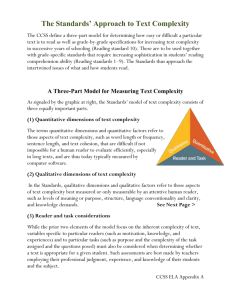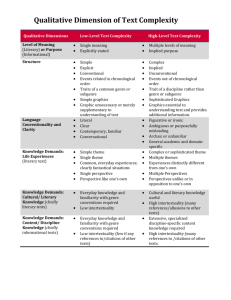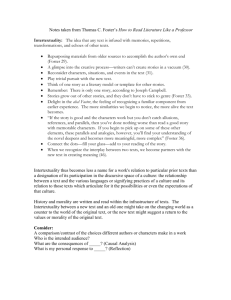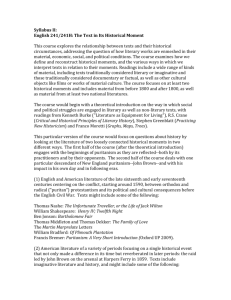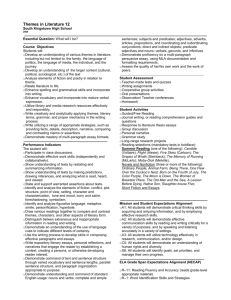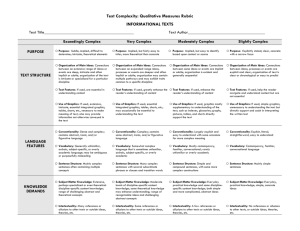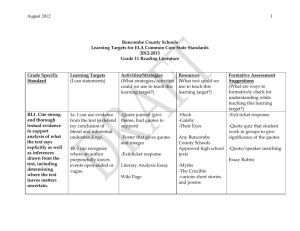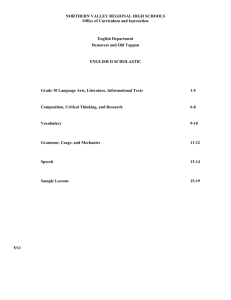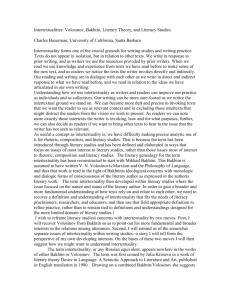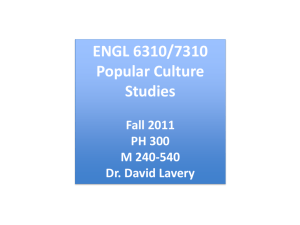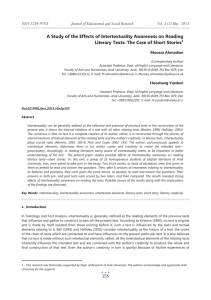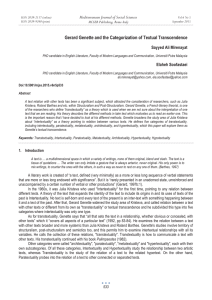handout-qualitative-dimensions-of-text-complexity---copy-(2)
advertisement
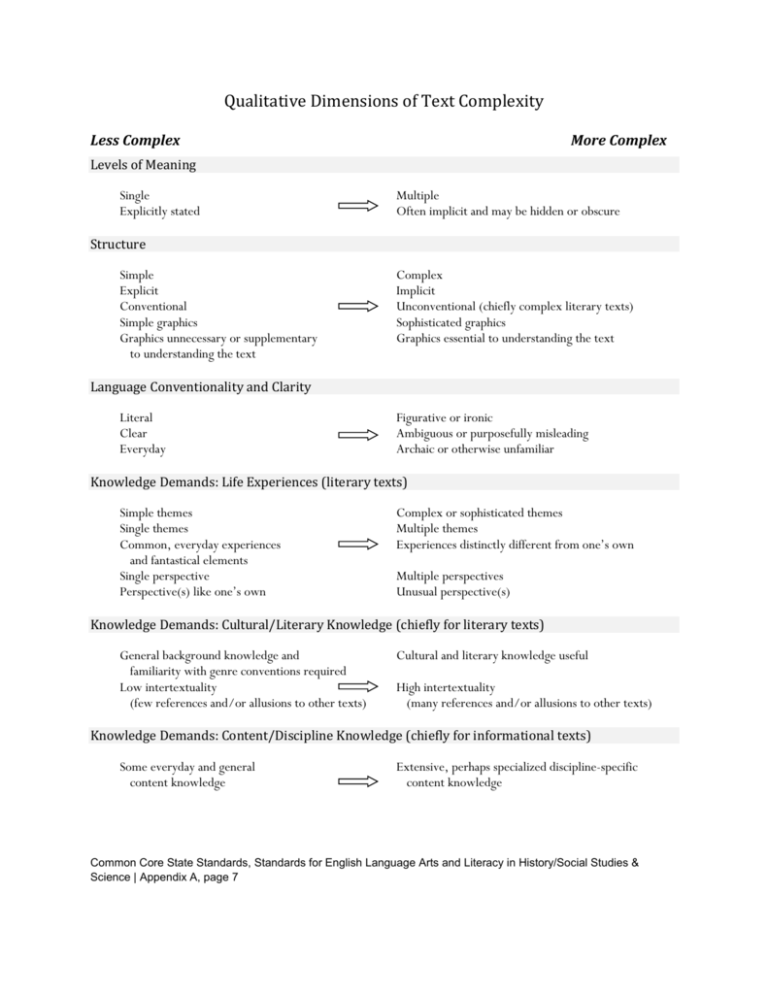
Qualitative Dimensions of Text Complexity Less Complex More Complex Levels of Meaning Single Explicitly stated Multiple Often implicit and may be hidden or obscure Structure Simple Explicit Conventional Simple graphics Graphics unnecessary or supplementary to understanding the text Complex Implicit Unconventional (chiefly complex literary texts) Sophisticated graphics Graphics essential to understanding the text Language Conventionality and Clarity Literal Clear Everyday Figurative or ironic Ambiguous or purposefully misleading Archaic or otherwise unfamiliar Knowledge Demands: Life Experiences (literary texts) Simple themes Single themes Common, everyday experiences and fantastical elements Single perspective Perspective(s) like one’s own Complex or sophisticated themes Multiple themes Experiences distinctly different from one’s own Multiple perspectives Unusual perspective(s) Knowledge Demands: Cultural/Literary Knowledge (chiefly for literary texts) General background knowledge and familiarity with genre conventions required Low intertextuality (few references and/or allusions to other texts) Cultural and literary knowledge useful High intertextuality (many references and/or allusions to other texts) Knowledge Demands: Content/Discipline Knowledge (chiefly for informational texts) Some everyday and general content knowledge Extensive, perhaps specialized discipline-specific content knowledge Common Core State Standards, Standards for English Language Arts and Literacy in History/Social Studies & Science | Appendix A, page 7
